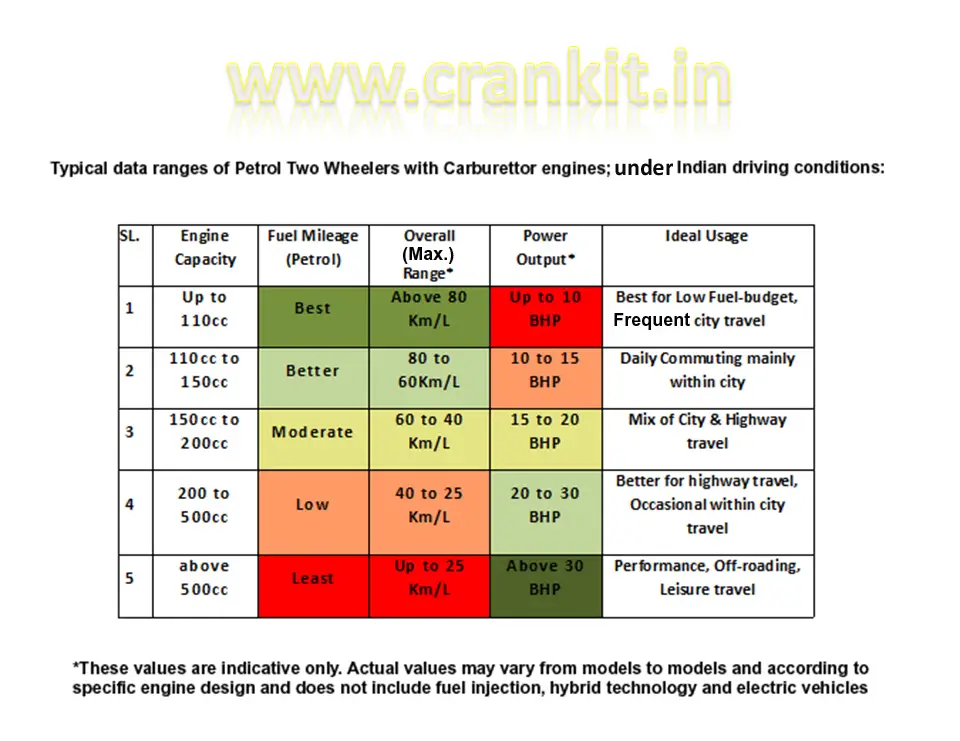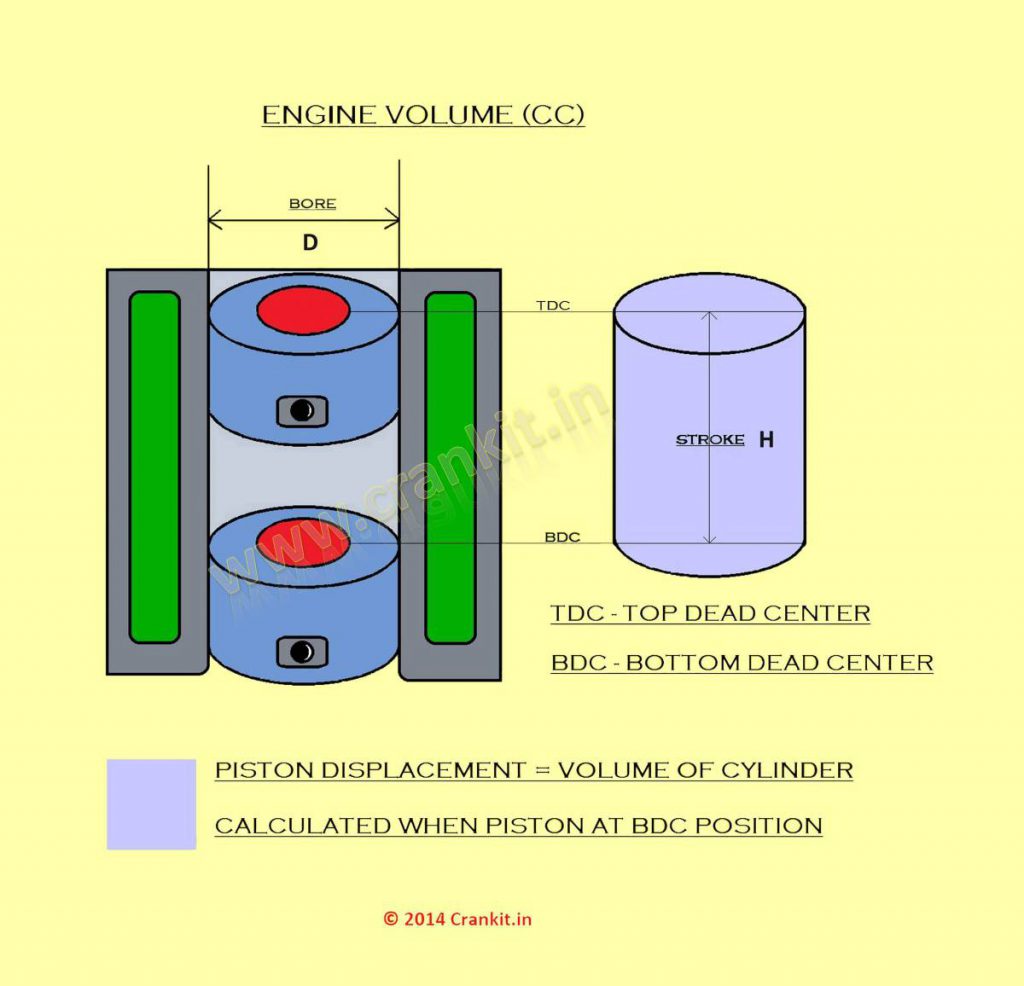What is Engine Capacity (cc):
The term “cc” stands for Cubic Centimeters or simply cm³ which is a metric unit to measure the Engine Capacity or volume. It is the unit of measuring the volume of a cube having a size of 1cm X 1cm X 1cm. CC is also known as ‘Engine Displacement.’ It means the displacement of the piston inside the cylinder from the Top Dead Centre (TDC) to the Bottom Dead Centre (BDC) in the engine’s one complete cycle. Manufacturers also measure the Engine Volume in Liters corresponding to Cubic Centimeters.
If an engine has a capacity of say 1000cc or 1000 Cubic Centimeters, then the capacity of that engine is 1 Liter.
For e.g.
1000cc = 1000cm³ = 1 Liter = 1.0L
Similarly,
800cc = 800cm³ = 0.8 Liter = 0.8L
How to measure Engine capacity or Engine Volume:
To calculate the volume of an engine, you can use the formula:
V = π/4 x (D)² x H x N
Where, V = Volume, D = Bore Diameter, H = Stroke Length, N = No. of Cylinders
It is the combined capacity for all engine cylinders added together while it completes its one cycle. For example, suppose a four-cylinder engine has a capacity of 1000cc or 1.0L. In that case, all the four cylinders can together accommodate a maximum of 1000 cubic centimeters or 1.0L of the volume of air (or air-fuel mixture) in them. On the other hand, if the engine has only one cylinder, that lone cylinder will accommodate all 1000cc or 1.0L of air inside it. By the way, the world’s first automotive – the Mercedes-Benz MotorWagen featured a single-cylinder 1.0-liter engine (954cc to be precise).
How Engine Capacity affects its performance:
The engine’s capacity plays a vital role in determining various engine outputs such as engine power, torque, and mileage. Firstly, it is the volume, or in other words, the space available inside the cylinder to accommodate the air-fuel mixture for burning. Consider that it is just like a drum filled with water. The bigger the drum, the more water it can accumulate and guzzle.
Similarly, an engine with a higher capacity sucks more air into the cylinder. As the air volume grows, the fuel system also proportionately increases the corresponding quantity of fuel to the engine. Therefore, as the amount of fuel for burning increases, it also increases the power output. Hence, in simple words, the power output of an engine is directly proportional to its capacity in a conventional engine design. Incidentally, the Chevrolet 9.3L V8 crate engine is one of the largest capacity engines in the world.
Supplying more fuel to the engine increases its power and fuel consumption. As the volume of the cylinders increases, the power output also increases. But eventually, this reduces the mileage. Hence, in that context, the car’s mileage is inversely proportional to the engine capacity in a conventional design. The manufacturers keep upgrading the petrol engines and strike a balance between power and mileage to achieve performance and efficiency.
How Engine Capacity affects mileage:
Typically, the cars with petrol engines of the best fuel mileage come in a zone of up to 1000cc. Those with capacities of 1000cc to 1500cc have better mileage figures. Whereas engines with displacement from 1500cc to 1800cc have a moderate fuel average range. Those with capacities from 1800cc-2500cc have a lower fuel average range, and engines above 2500cc have the least mileage, as shown in the chart below.

An almost identical set of rules applies to bikes’ smaller carburetor engines. Typically, the bike engines with the best fuel average come in the range of up to 110cc. Engines from 110cc to 150cc have better mileage figures. Engines with capacities from 150cc to 200cc have a moderate fuel average range. And, engines from 200cc to 500cc have lower mileage. Finally, engines above 500cc have the least mileage, as shown in the chart below.

Hence, engine cc displacement is crucial when buying an automobile. However, it would be best to thoughtfully decide the displacement by analyzing the vehicle’s intended purpose or end usage. Thus, it is so that it doesn’t disappoint you with the performance of the vehicle you select.

